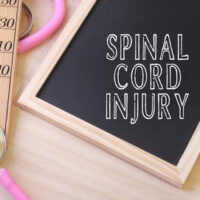Understanding C4/C5 And C5/C6 Injuries

Neck injuries are one of the most common consequences of serious accidents and depending on their severity, could leave a person suffering from long-term impairments, like chronic pain and reduced motion. Of the many types of neck injuries that a person can sustain, those affecting the spinal cord are perhaps the most dangerous, as any damage to this area could cause severe pain and even paralysis. Victims who suffer from herniated discs because of an accident often face a lengthy recovery and incur substantial losses, so if you or a loved one suffered a C4, C5, or C6 injury because of someone else’s negligence, you should speak with an experienced Fort Lauderdale spinal cord injury lawyer about seeking compensation for your losses.
What is the Spinal Column?
The spinal column is made up of bones, muscles, and tendons and runs down the back from the skull, all the way to the tailbone. The bones in the spinal column are known as vertebrae and work to protect and shield the bundle of nerves inside the spinal cord. The spine is made up of many vertebrae, but there are seven in the neck, specifically numbered beginning at the top of the neck with C1 and ending at C7, which is located at the bottom of the neck. Between each of these bones are sac-like cushions, commonly referred to as discs, that provide a cushion between the bones during movement. Each disc is identified by its location, so a disc located between the fourth and fifth bones in the neck would be referred to as the C4/C5 disc.
What Causes Herniated Discs?
Intervertebral discs are made up of a jelly-like material that is surrounded by a fiber-based outer section. A herniated disc occurs when the inner section of the disc manages to seep through the fiber portion and into the spinal column through tears in the disc’s outer layer. Herniated discs can occur anywhere, but are particularly common in the C4/C5 and C5/C6 locations. Often, herniated discs in this region are the result of accidents involving blunt force trauma and can leave an injured party suffering from intense pain and limited mobility. Certain symptoms are also more likely to occur after specific injuries. Those with C4/C5 injuries, for instance, are more likely to suffer from weakness and pain in the shoulders, while individuals suffering from C5/C6 injuries are more likely to suffer from tingling and numbness, as well as pain in the forearms, hands, and biceps.
Treating Herniated Discs
How a herniated disc is treated will depend on its severity, as well as the symptoms experienced by the patient. In mild cases, rest and muscle relaxants are often enough to heal a ruptured disc. In severe cases, on the other hand, a person may require steroid injections, physical therapy, and even surgery, all of which can be expensive. Fortunately, injured parties who can prove that someone else caused their neck injury, could be entitled to compensation for medical bills and lost wages.
Experienced Spinal Cord Injury Lawyers in Fort Lauderdale, FL
To speak with a dedicated lawyer about seeking compensation for your own accident-related spinal cord injuries, please call Boone & Davis at 954-566-9919 today.
Resource:
cancer.gov/publications/dictionaries/cancer-terms/def/spinal-column
